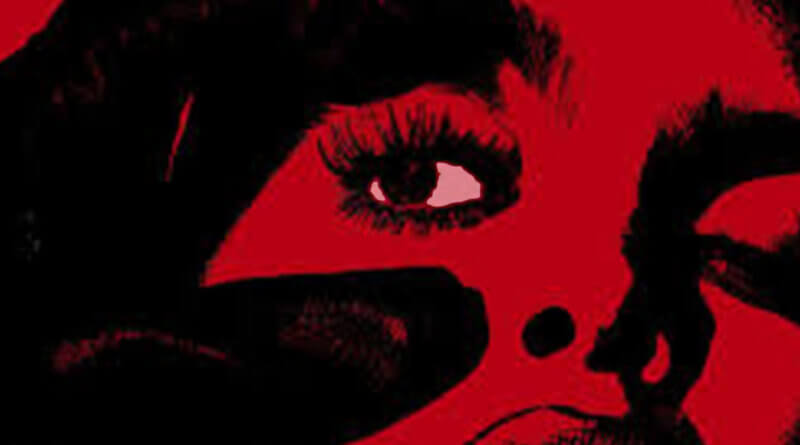Giallo — The Distinctly Italian Genre
Of all the genres in world cinema, the giallo is one of the most compelling — and frequently one of the goofiest, mainly due to the English dubbing and hilarious translations. A title like Rivelazioni di un maniaco sessuale al capo della squadra mobile, which rather clunkily translates to Revelations of a Sex Maniac to the Leader of the Mobile Squad is renamed in America to the more exploitable The Slasher…is the Sex Maniac!
And can you imagine seeing a 1970s girl cuddling up to her boyfriend and pleading, “Honey…let’s go see Strip Nude for Your Killer.”

Giallo is the Italian word for yellow. It describes the covers of early pulp novels about crime and murder published by Arnoldo Mondadori Editore. The color became so synonymous with the crime thriller genre that other publishing houses would adopt the yellow covers as well.
It was only a matter of time that giallo would become a film genre, with the legendary director Mario Bava kicking things off with 1963’s The Girl Who Knew Too Much, a nod to Hitchcock’s The Man Who Knew Too Much, but with an extra helping of violence.
If you know giallo, you know the drill…semi-clad actresses/models/singers/aerobics instructors are lined up, waiting to be killed. A murderer whose black-gloved hands clutching a knife (or strangling scarf) is anything the audience sees. And tough-talking detectives work to solve the crimes while red herrings are dangling everywhere.
Dario Argento is responsible for perhaps the best giallo of them all…1982’s Tenebrae. If Suspiria is the director’s perfect fantasy/horror, then Tenebrae is his most magnificently realized murder mystery.

Anthony Franciosa stars as Peter Neal, an American writer visiting Rome on a promotional tour for his latest book, Tenebrae, when a rash of murders breaks out that happen to mimic the deaths in his novel. He is contacted by the police and soon finds himself embroiled in the investigation.
For viewers who have only seen Argento’s “dark” films, Tenebrae may come as a surprise. It’s brightly lit and color-saturated; indeed, there are many daytime scenes, including the broad-daylight murder of Neal’s agent (John Saxon).

But night does fall, and Argento takes full advantage of the blackness to stage some of the film’s most gruesome killings and suspense sequences. One great sequence has a girl trapped between the killer and a vicious guard dog, not knowing which way to go.
There’s also a great exterior crane shot as the camera prowls all around an apartment building for a long time before the murderer goes inside to kill the quarreling lesbian couple (hissing “slimy perverts“). And when another victim gets her arm amputated by the murderer, she staggers around the kitchen a lot as blood sprays everywhere on the walls, creating a Jackson Pollock original of her own.
There are some truly unexpected twists, and the surprise revelation at the end sent me lurching toward the ceiling upon my first viewing.
Tenebrae is Argento’s most coherent and best-acted film, and it’s also well-cast. Franciosa is great as Neal and Saxon provides able support as his tough-talking agent. Argento’s love at the time, Daria Nicolodi, plays his devoted assistant, Anne, and the director even sneaks in fellow Italian horror moviemakers Lamberto Bava and Michele Soavi in cameos.
Speaking of Bava, he’s tried so hard to follow in his father’s footsteps, but he peaked early with 1980’s Macabre, a little number about a woman who keeps her dead lover’s head in the refrigerator. It’s a good movie, reminiscent of Polanski’s Repulsion, but even more twisted.
However, Bava’s resumé has otherwise been spotty. A lot of fans love the Demons series of films. They’re not without their charm, but they’re pretty much murder machines with a lot of special effects makeup, which I must confess is still a lot of fun. And Soavi shows up again in a metal-masked cameo.

I bought A Blade in the Dark (1983) on laser disc on the strength of Bava le fils’ name. It stars Andrea Occhipinti (the quack quack killer in Fulci’s New York Ripper) as a composer who ensconces himself at a Tuscan villa while writing the score for a horror film which may hold the clue to a real killer’s identity.
It’s a goofy movie, but not entirely objectionable in a “let’s throw everything at the wall and see what sticks” kind of way. And Soavi appears again as Occhipinti’s agent. But there’s only one really explicit murder, which makes it feel like kind of a cheat.

Giallo fans often cite Lucio Fulci’s Lizard in a Woman’s Skin as their favorite, but I like Don’t Torture a Duckling, made in 1972. When a series of child murders breaks out in a small town, the suspects include a simpleton, a gypsy woman, a hermit and a young woman of “easy virtue.”
It’s one of Fulci’s most serious-minded films with its themes of religious hypocrisy and criticism of the Catholic church. And the whole child endangerment subplot is even more relevant today.
The setting for this film is interesting. Giallos are typically urban, but Duckling takes place in one of those little Italian villages whose church forms the center of its community and, like Tenebrae, it’s very sunny.
It’s also quite violent. Superstitious villagers accuse the gypsy (Lizard‘s Florinda Bolkan) of being a witch, beating her with chains in a painfully flesh-stripping sequence. And the scene with a man falling off a cliff features loving close-ups of his face being ripped to pieces as he hits the jagged rocks again and again, a neat FX trick Fulci loved so much that he re-used it in 1977’s The Psychic. And the director pulls no punches in showing the bodies of the murdered boys.

American gialli are a rarity, but Alfred Sole’s 1976 Alice, Sweet Alice fits the category with its mystery killer and gory murders. Paula Sheppard plays Alice, a disturbed 12-year-old who is accused of murdering her younger sister (a debuting Brooke Shields). Set in 1960s New Jersey, it’s rife with religious symbolism…and religious guilt.
Sole keeps the audience guessing while providing a lot to think about. His compositions are extraordinary and the characters suitably bizarre. The landlord in Alice’s building is the disgustingly obese and damp Mr. Alphonso (Alphonso DeNoble), who tries to molest her, and practically all the other adults seem to be ineffective or out of their minds.
There are some memorably violent setpieces in the film as well. When Alice’s Aunt Annie (Jane Lowry) is standing on the staircase outside their apartment, the killer below her stabs at her feet and legs. And when a victim is clutching a St. Christopher’s medal in his mouth to provide a post-mortem bit of evidence for the cops, the killer bashes his teeth in with a rock to retrieve it. I don’t want to give any other spoilers, because this is a slasher giallo worth seeing.
Due to distribution troubles, Alice got thrown into public domain in the early days of home video, and has wrongly earned the reputation of being an exploitation cheapie. Nothing could be further from the truth.
And, of course, killers in flesh-colored masks are always extra creepy.

Brian DePalma’s Dressed to Kill is his loving 1979 tribute to giallo. Dismissed on its original release as self-indulgent claptrap by the uninitiated, it has grown in stature over the years.
In the ’80s, the home video revolution brought Italian gialli to our shores, and we learned to speak the language. This enabled modern viewers to appreciate this dreamlike fugue with its gorgeous cinematography by Ralf Bode and the luscious score by Italian composer Pino Donaggio.
Although some of the plot twists are a bit obvious (but so were the original gialli), just check out the seduction scene as a mystery man toys with Angie Dickinson in a Steadicam tour of MOMA (actually the Philadelphia Museum of Art).
And the interactions between teenager Peter (Keith Gordon) and Liz (Nancy Allen), the world-wise hooker who witnessed his mother’s demise and teams up with him to find the killer, are tartly refreshing.
GIALLO UPDATE
Here’s the last word — and maybe the last nail in the genre’s coffin. In 2009, Argento tried to revisit his former glory with the bluntly-titled Giallo, starring Adrian Brody and Emmanuelle Seigner, but it was an unsurprisingly boring snoozefest. He’s got two films that are either announced or in pre-production, but I just don’t know if he’s got the steam. At age 79, je keeps falling back on his old tropes to lesser and lesser effect.
AND NOW A REVIEW
Now for the goofy. Recently I watched the aforementioned The Slasher…is the Sex Maniac!, starring a slumming Farley Granger (Hitchcock’s Rope and Strangers on a Train), and I was rewarded with all the cheesy fun one wants in an Italian thriller from the ’70s.
 Granger plays a homicide detective in search of a murderer who targets the wives of prominent men, but who are also involved in extramarital affairs. This sets the rather misogynist tone of the piece. Even Granger’s cop notes about one of the widowers: “The husband is shattered. First the murder, and then he finds out his wife was a whore.”
Granger plays a homicide detective in search of a murderer who targets the wives of prominent men, but who are also involved in extramarital affairs. This sets the rather misogynist tone of the piece. Even Granger’s cop notes about one of the widowers: “The husband is shattered. First the murder, and then he finds out his wife was a whore.”
This being 1972, it’s a big-time boob and butt movie, and almost all of the victims are seen frolicking with their Bee Gees lookalike boyfriends prior to their slaying. And there’s always a knife wound below one of the victim’s breasts so that the camera can linger upon it again and again. The score is a kind of soft jazz with the de regueur female voices singing “oohhh…ahhhh….”
There’s some strange continuity, too. One victim’s boyfriend leaves the house and the killer, dressed all in black with a black stocking hiding his face, appears. The victim screams and races outside where it’s suddenly day-for-night and she’s running on a beach. And even though the killer stabs at her with up-and-down motions, somehow her throat is neatly slit from ear to ear.
It’s also a really smoky movie. Everyone is smoking constantly. And Granger stops to stare thoughtfully at the camera for a long time (while smoking) when something is occurring to him. I don’t recall seeing a film with so many actors that look like wax dummies, but they blink and move, so I guess they must be alive.
The women all have really elaborate 1970s eye makeup and hairdos, and some of them look like drag queens. And how come when the killer telephones the police to mock them he has to get all decked out in his maniac outfit and mask? It’s not like he’s Facetiming them!
The conclusion is actually quite interesting, however (no spoilers).
There’s supposedly a XXX version floating around with hardcore inserts, which would be a very strange experience indeed.




